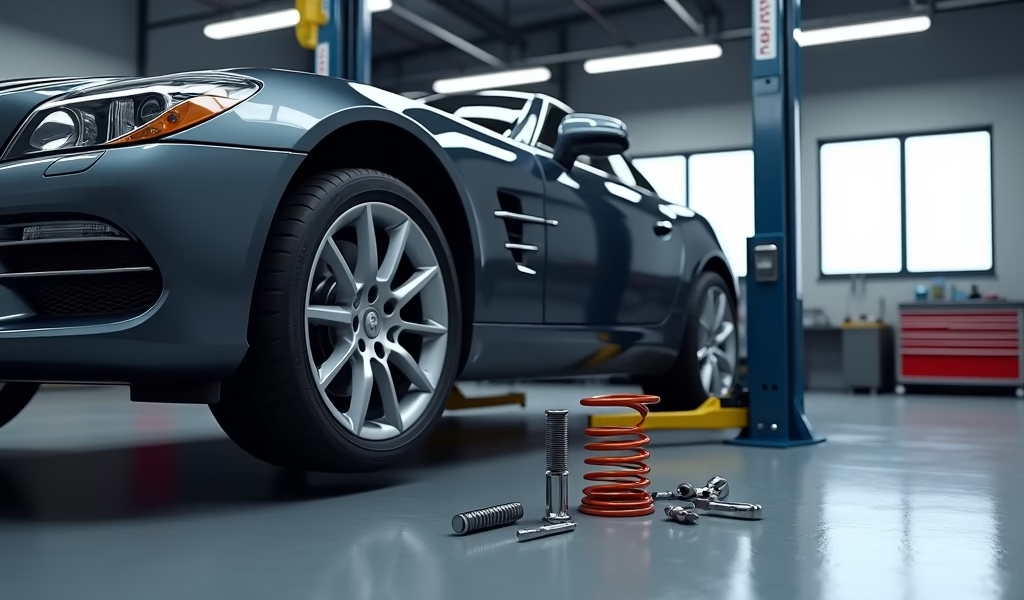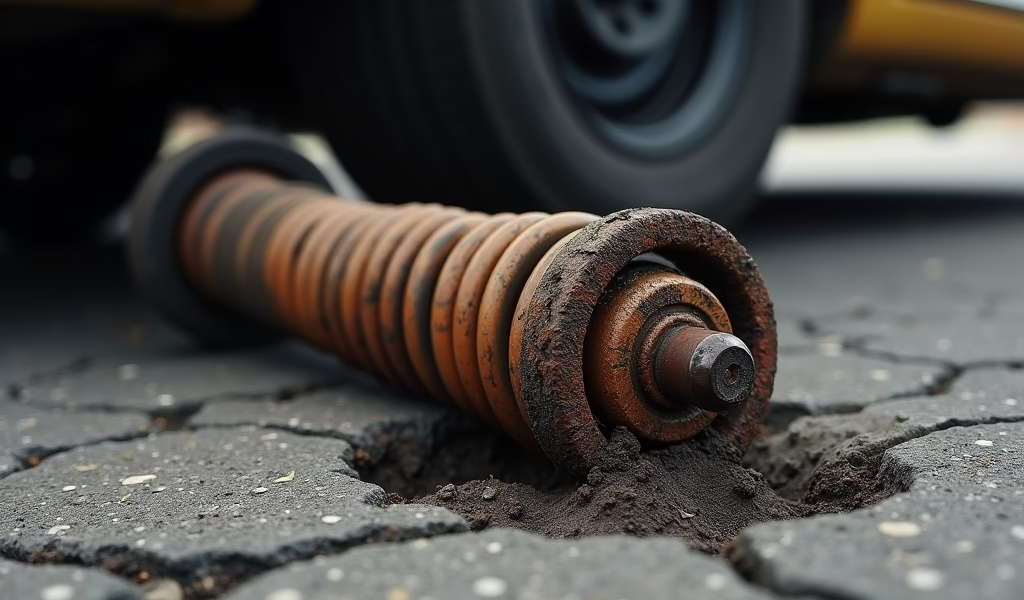Overview
This article explains that coil spring free height—the natural, uncompressed length of a spring—is a critical but often overlooked specification that affects vehicle handling, safety, and component longevity. Proper measurement and specification of spring free height prevents issues like uneven stance, excessive body roll, and premature wear on suspension components, with the author providing detailed guidance on measuring, troubleshooting, and maintaining correct spring specifications.
Table of Contents
- Introduction
- What Is Coil Spring Free Height?
- Importance of Accurate Free Height Specifications
- Common Issues with Free Height Specifications
- How to Properly Specify Free Height
- Applications Where Free Height Is Critical
- Troubleshooting Free Height Issues
- Best Practices for Engineers and Mechanics
- Conclusion
- Frequently Asked Questions
Introduction
Ever found yourself staring at a set of coil springs, wondering why your car sits like it’s perpetually carrying a load of bricks? You’re not alone. I’ve seen countless vehicles roll into my shop with suspension issues that trace back to one overlooked detail: coil spring free height specification.
Let me put this in perspective. Those spiral-shaped mechanical components aren’t just random parts – they’re precisely engineered elements that keep your ride comfortable and your handling predictable. And their free height? That’s the foundation everything else builds upon.
After 20 years of wrenching on suspensions, I can tell you that understanding coil spring free height isn’t just mechanic mumbo-jumbo. It’s the difference between a car that corners like it’s on rails and one that wallows like a boat in choppy waters. And trust me, your tires, alignment, and overall driving experience hang in the balance.
So let’s demystify this critical but often misunderstood specification. Whether you’re troubleshooting an existing issue or planning a suspension upgrade, getting this right will save you headaches (and money) down the road.
What Is Coil Spring Free Height?

In the simplest terms, coil spring free height is the natural, uncompressed length of a spring when nothing’s pushing or pulling on it. It’s your spring just being itself, relaxed and unstressed – before it gets installed and put to work.
Think of it this way: if you took the spring out of your car and set it on your garage floor, the height it stands at is its free height. This measurement is taken from the bottom coil to the top coil when the spring is standing vertically on a flat surface.
This differs from installed height, which is how tall the spring is once it’s mounted in your vehicle with the weight of your car compressing it. And it’s certainly not the same as solid height – that’s when the spring is fully compressed until all the coils touch each other (something you hope never happens during normal driving!).
Free height matters because it’s the starting point that determines how much load your spring can handle and how it’ll perform under stress. It’s like knowing your baseline health metrics – you need that reference point to understand if something’s off.
When manufacturers design suspension geometry, they calculate exact spring rates and heights to achieve specific handling characteristics. If your spring’s free height is incorrect, everything from your ride height to your suspension travel gets thrown off balance.
Importance of Accurate Free Height Specifications
Let’s talk consequences. When your coil spring’s free height is off-spec, you’re not just dealing with aesthetic issues like your car sitting too high or too low (though that happens too). The real problems run deeper.
First, there’s the handling impact. Springs that are too tall can cause excessive body roll in corners because they place the vehicle’s center of gravity higher than intended. Conversely, springs that are too short might make your ride harsh and reduce suspension travel, causing your car to bottom out over bumps. Neither scenario makes for a happy driving experience.
Safety concerns can’t be overlooked either. Your suspension system isn’t just about comfort – it’s a safety component that affects how your vehicle responds in emergency situations. Improper spring height can alter braking distances and emergency handling characteristics in ways that might catch you off guard when you least expect it.
Then there’s the domino effect on other components. When springs aren’t at the correct free height, the strut assemblies work at improper angles, accelerating wear on bushings, bearings, and even ball joints. Your alignment gets thrown off, causing uneven tire wear – and we all know quality tires aren’t cheap these days.
I’ve seen countless customers waste money replacing perfectly good shocks or struts, only to discover their real issue was improper spring height all along. Getting this specification right isn’t just about perfection – it’s about practical, real-world performance and longevity for your entire suspension system.
Common Issues with Free Height Specifications
In my years at the shop, I’ve encountered several recurring problems related to coil spring free height. Understanding these can help you avoid the same pitfalls.
Manufacturing tolerances are a reality we all live with. Even the best spring manufacturers work within acceptable ranges, not exact dimensions. A spring specified for 14 inches might legitimately be anywhere from 13.8 to 14.2 inches and still be considered “in spec.” These small variations compound when you’re dealing with four springs on a vehicle.
Temperature effects aren’t theoretical – they’re very real. Steel expands when hot and contracts when cold. A spring measured in a climate-controlled factory will have a slightly different free height in your scorching summer garage or during a frigid winter morning. Professional mechanics account for this by taking measurements in stable conditions.
Spring sag is perhaps the most misunderstood issue. Springs don’t maintain their free height indefinitely – they settle over time as metal fatigue sets in. This natural aging process accelerates with heavy loads, rough roads, and aggressive driving. A five-year-old spring might have lost 0.5-1 inch of free height compared to when it was new, even without visible damage.
Aftermarket complications arise when replacement springs don’t match OEM specifications. Some manufacturers cut corners, while others intentionally offer different heights for lowering or lifting applications. Without clear specifications and quality control, you might not get what you expect.
According to a Society of Automotive Engineers study, up to 15% of suspension issues are directly attributable to incorrect spring specifications, making this one of the most common yet overlooked causes of handling problems.
How to Properly Specify Free Height
Getting accurate measurements isn’t just for engineering textbooks – it’s essential for real-world repairs. Here’s my method for properly measuring and specifying coil spring free height:
First, ensure the spring is completely removed from the vehicle and free of load. Place it on a flat, level surface – I use a steel workbench that I know is dead level. For accuracy, let the spring stand vertically and make sure it’s not leaning.
Use a quality measuring tool – a digital height gauge is ideal, but a good tape measure will work if you’re careful. Measure from the surface to the very top of the uppermost coil. For springs with ground ends, measure the entire height; for springs with open or tangential ends, you may need to account for the end configuration.
Always take multiple measurements from different positions around the spring’s circumference and average them out. Springs aren’t always perfectly level at the top, so this gives you a more accurate overall height.
Remember that specifications typically include tolerances. When ordering replacement springs, confirm whether the listed measurement is the nominal (target) value or includes tolerance ranges. Most quality manufacturers list a tolerance of ±2-3% for free height.
Documentation is your ally in this process. Always record your measurements, including the conditions (temperature, humidity) under which they were taken. This creates a baseline for future comparison if issues arise.
When selecting coilover spring rates, remember that free height and spring rate work together to determine performance. A spring with the correct height but wrong rate will still perform poorly, and vice versa.
Applications Where Free Height Is Critical

Not all suspension applications are created equal when it comes to the importance of free height specifications. Let me walk you through some scenarios where getting this right is absolutely critical.
In performance and sports cars, even small variations in ride height can dramatically affect handling characteristics. These vehicles often operate with minimal ground clearance and precisely calculated weight distribution. A Ferrari with springs that are off by just 10mm can experience noticeable understeer or oversteer, completely changing the car’s character.
Heavy-duty trucks and commercial vehicles depend on correct spring specifications to maintain their load-carrying capacity. I’ve seen work trucks with sagging springs that couldn’t safely carry their rated payload – a serious liability for businesses that depend on these vehicles.
Lifted and modified 4x4s present their own challenges. When you’re changing ride height intentionally, the free height specification becomes even more important to maintain proper suspension geometry. Many off-road enthusiasts don’t realize that simply installing taller springs without addressing angles and linkages can create dangerous handling conditions.
Classic car restorations often face specification challenges. Original documentation may be scarce, and decades-old standards might not translate well to modern measuring techniques. In these cases, I often recommend consulting with specialists or using spring manufacturer resources to determine the correct specifications.
Racing applications take this to the extreme, where even a 1mm difference in free height can affect a vehicle’s aerodynamics and handling balance. Teams meticulously measure and match spring sets to ensure consistent performance from all four corners.
Troubleshooting Free Height Issues
So you suspect your vehicle might have coil spring free height issues? Here’s my diagnostic approach based on common symptoms and practical solutions.
If your vehicle sits noticeably higher or lower on one side, you’re likely dealing with a free height discrepancy between left and right springs. This uneven stance not only looks bad but puts strain on your steering components and creates uneven tire wear patterns.
When your car bottoms out over bumps despite having good shocks, your springs probably have insufficient free height. This reduces your suspension travel, limiting the system’s ability to absorb impacts properly. You might hear clunking noises when this happens – that’s your suspension components hitting their mechanical limits.
Excessive body roll during cornering, especially if it’s gotten worse over time, often indicates spring fatigue and loss of free height. Your car’s center of gravity ends up lower than designed, reducing the suspension’s ability to control lateral weight transfer.
To verify if free height is your culprit, you’ll need to remove and measure the springs. Compare your measurements with manufacturer specifications, keeping in mind that used springs will have some settlement. Generally, a spring that’s lost more than 10% of its original free height should be replaced rather than reused.
Sometimes, temporary fixes can address minor free height issues. Spring spacers or adjustable spring perches can compensate for slight height deficiencies, but these are band-aids rather than proper solutions. For performance applications or significant height loss, replacement with correctly specified springs is the only reliable remedy.
When ordering replacements, be specific about your requirements. Provide your vehicle details, including any modifications, to ensure you get springs with the correct free height, rate, and diameter. Quality matters – budget springs often have inconsistent specifications and shorter service lives.
Best Practices for Engineers and Mechanics
Whether you’re a professional technician or a dedicated DIYer, these best practices will help you manage coil spring free height effectively:
Always work with complete specifications. Don’t just focus on free height – consider spring rate, wire diameter, coil count, and end configuration together. These characteristics work as a system, and changing one affects how the others perform.
Use proper installation techniques to preserve free height. Avoid using spring compressors longer than necessary, as they can create temporary or permanent deformation if misused. Install springs in their correct orientation – many are wound with a specific direction in mind.
Inspect springs regularly for signs of fatigue or damage. Rust, visible gaps between coils when installed, or coil binding during normal suspension movement all indicate problems that might affect free height and performance.
Document everything. Keep records of original specifications, measurements of old parts, and details of new components. This creates a valuable reference for future maintenance or if problems arise.
Consider the entire suspension system when addressing free height issues. Replacing springs often necessitates inspecting shocks, strut mounts, and control arm bushings as well. These components work together, and problems in one area affect the others.
For critical applications, consider having springs tested professionally. Specialized equipment can measure not just free height but also rate linearity and fatigue resistance – factors that affect long-term performance.
According to research on automotive spring failures, improper specification and installation account for over 30% of premature spring failures – making these best practices not just theoretical but essential for reliability.
Conclusion
We’ve covered a lot of ground on coil spring free height specifications, from basic definitions to troubleshooting techniques. While it might seem like a minor detail in the grand scheme of vehicle maintenance, I hope I’ve shown why it’s actually foundational to your suspension’s performance, safety, and longevity.
Remember that your vehicle was engineered as a complete system, with each component carefully specified to work in harmony. When coil spring free height is compromised, that harmony is disrupted, affecting everything from ride comfort to handling predictability to tire wear patterns.
The next time you’re dealing with suspension work, take the time to verify your spring specifications – especially free height. This small attention to detail can save you from chasing phantom problems or wasting money on parts you don’t actually need.
Whether you’re restoring a classic car, maintaining your daily driver, or building a performance machine, understanding and respecting coil spring free height specifications will serve you well. It’s one of those invisible details that separate good work from great work – and great work is what keeps us all safer and happier on the road.
Frequently Asked Questions
What happens if coil spring free height is too short?
A spring with insufficient free height will cause your vehicle to sit lower than designed and have reduced suspension travel. This can lead to a harsh ride, premature bottoming out, and accelerated wear on other suspension components.
Can temperature affect coil spring free height measurements?
Yes, steel expands when heated and contracts when cooled, affecting measurement accuracy. Take measurements in a temperature-controlled environment whenever possible for consistency.
How much free height loss is normal for older springs?
Most quality springs can lose 3-5% of their free height over their service life due to normal fatigue. Anything beyond 10% loss generally indicates a spring that should be replaced.
Can I use spacers to compensate for lost free height?
Spring spacers can temporarily address minor height deficiencies but don’t restore the spring’s original performance characteristics. They’re a band-aid solution, not a proper repair for significantly sagged springs.
How often should coil springs be replaced?
Unlike wear items such as brake pads, springs don’t have a fixed replacement interval. They should be inspected during suspension service and replaced when they show significant height loss, visible damage, or when ride height becomes uneven.

